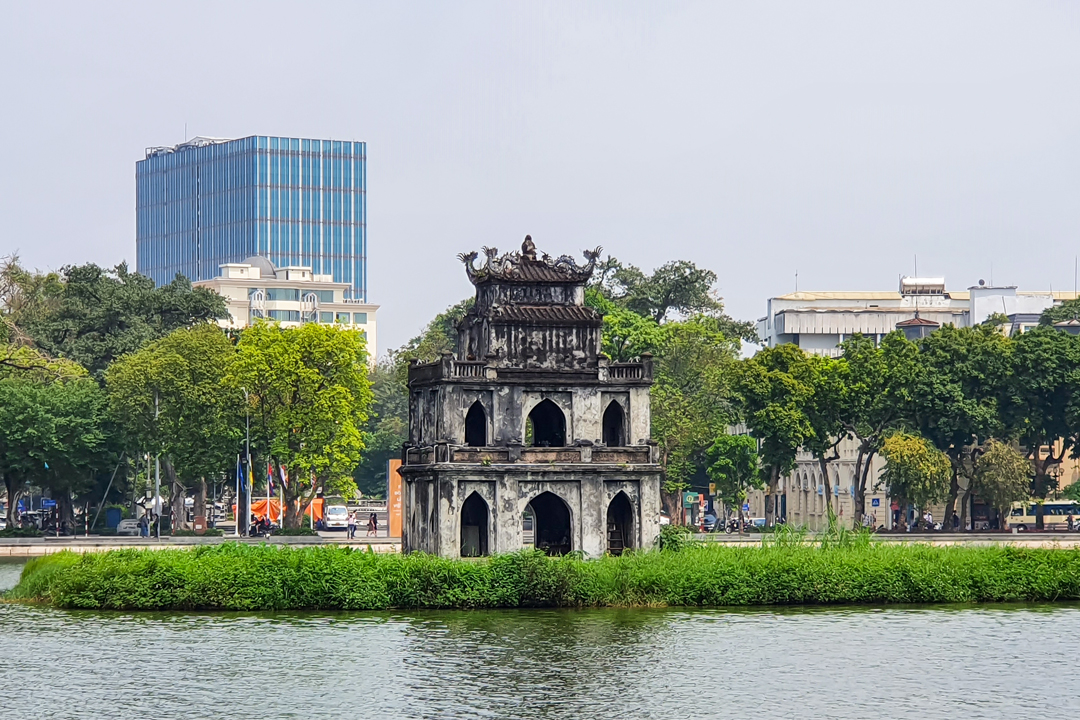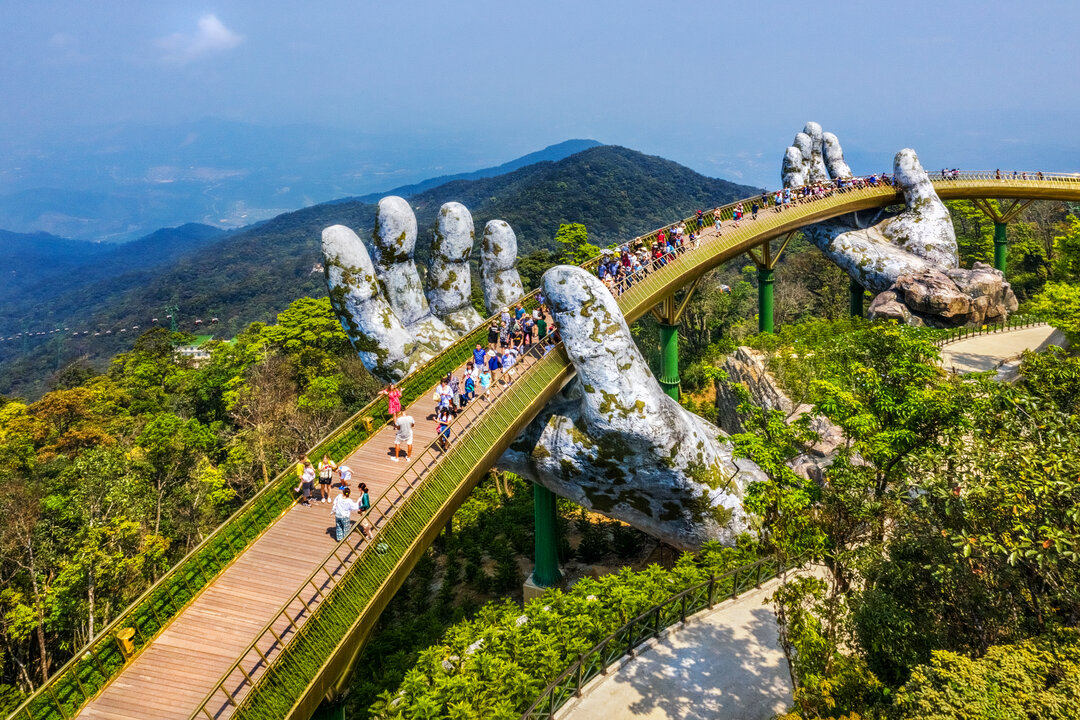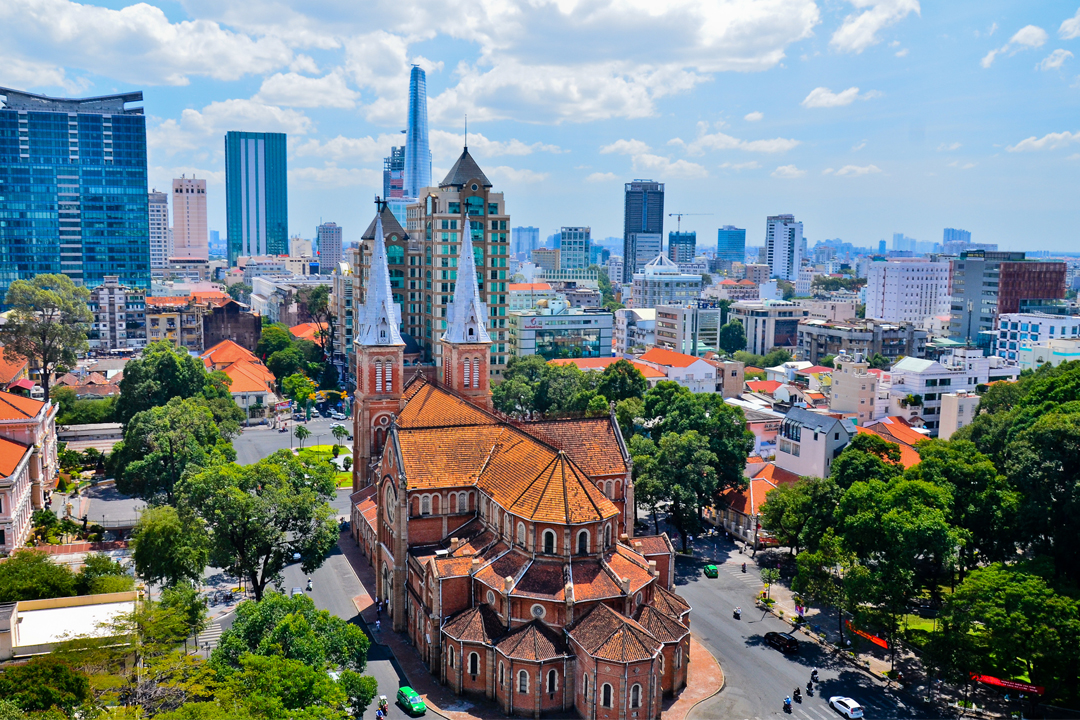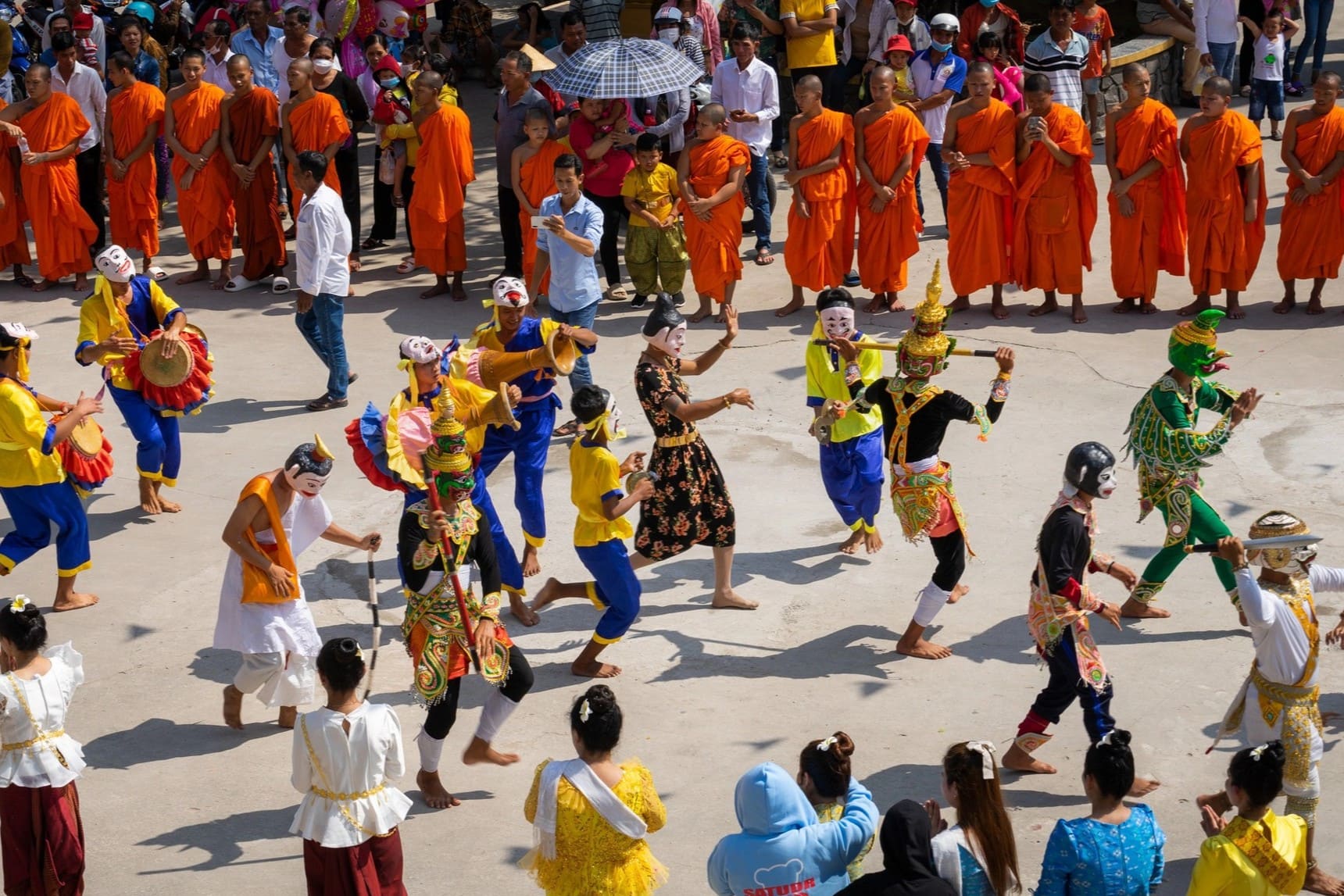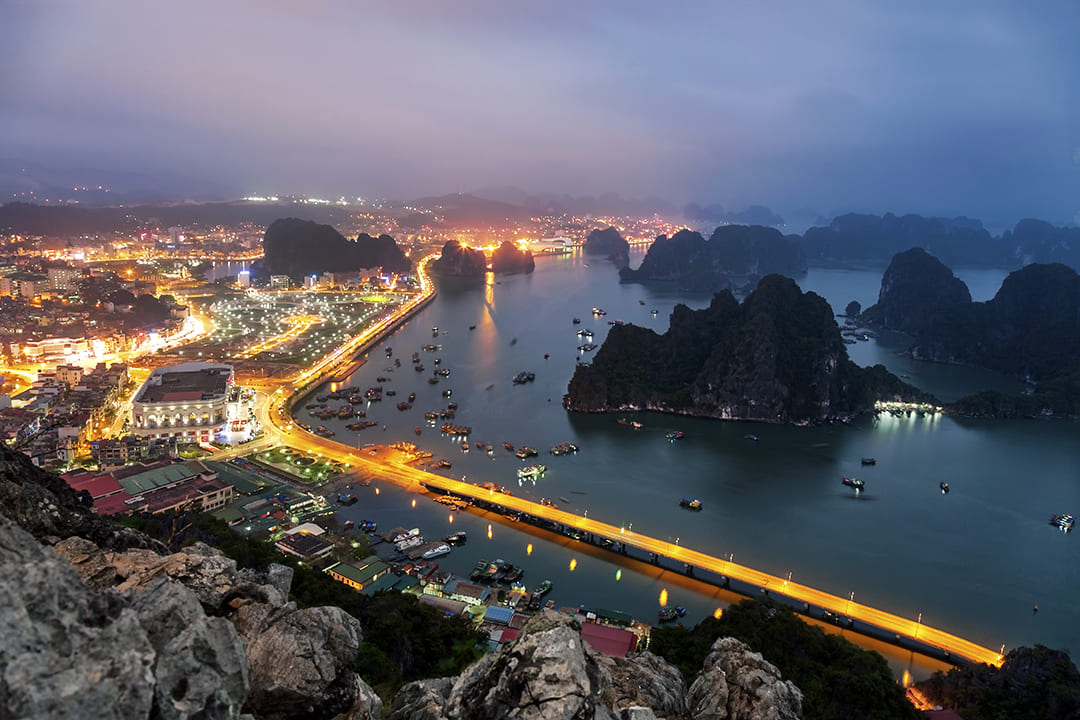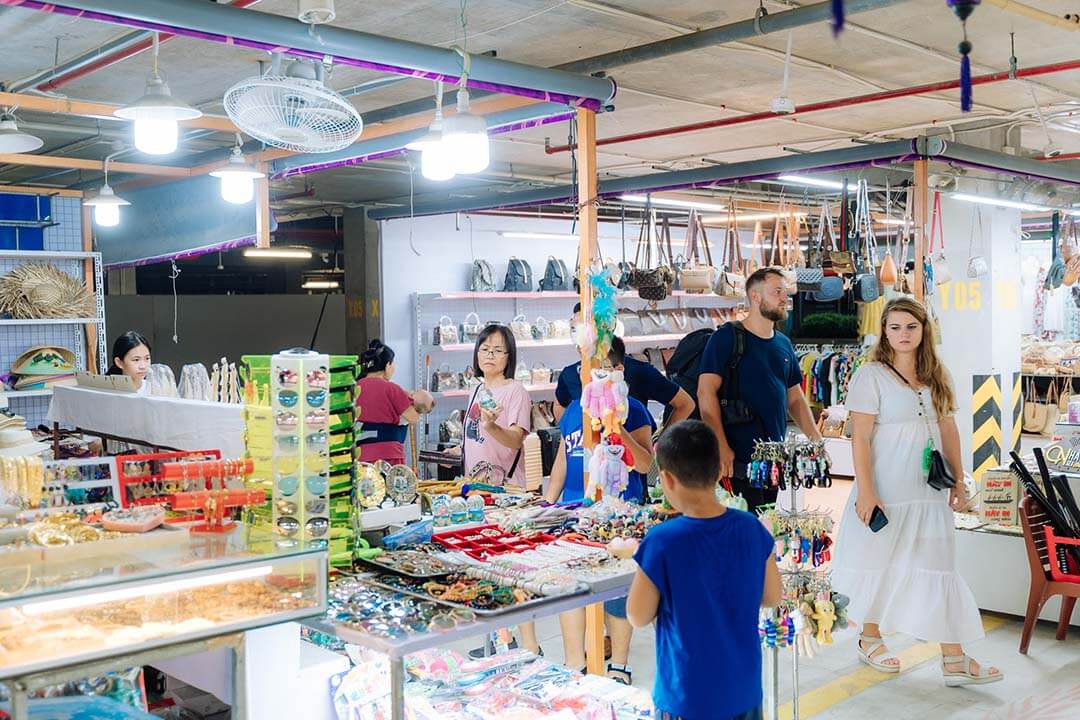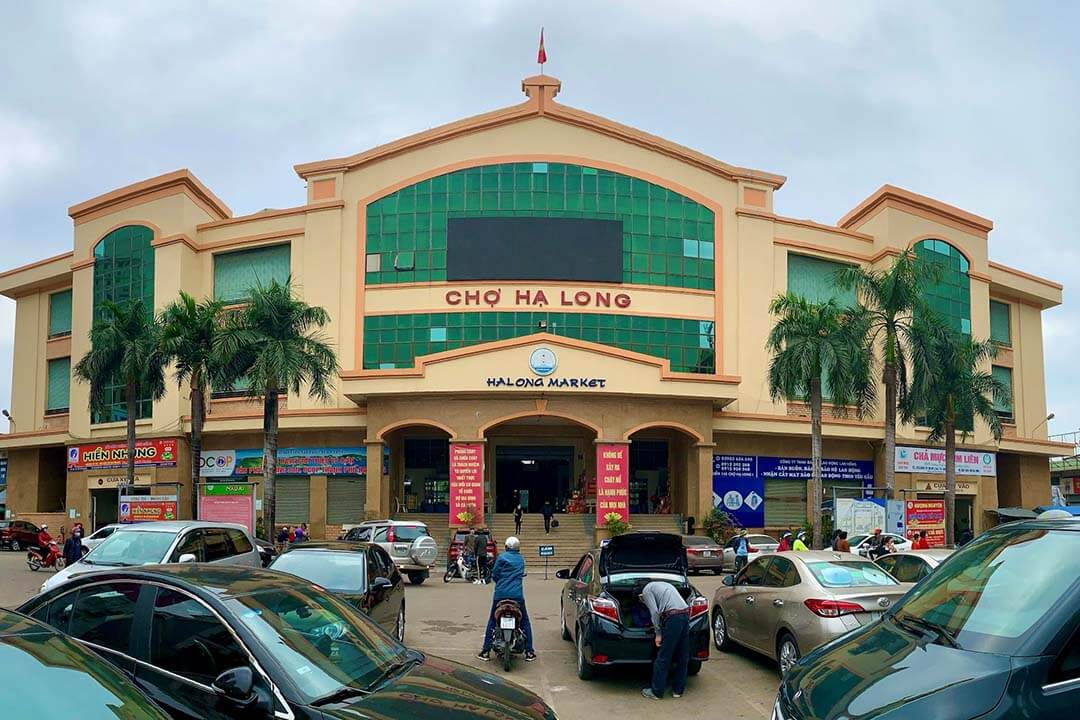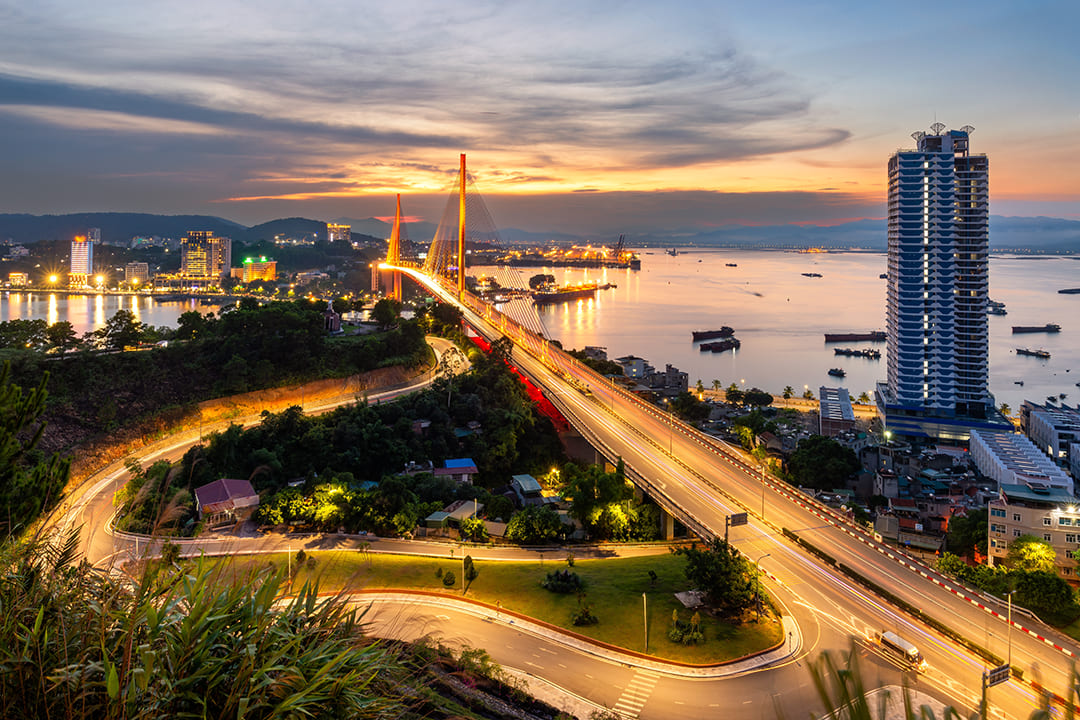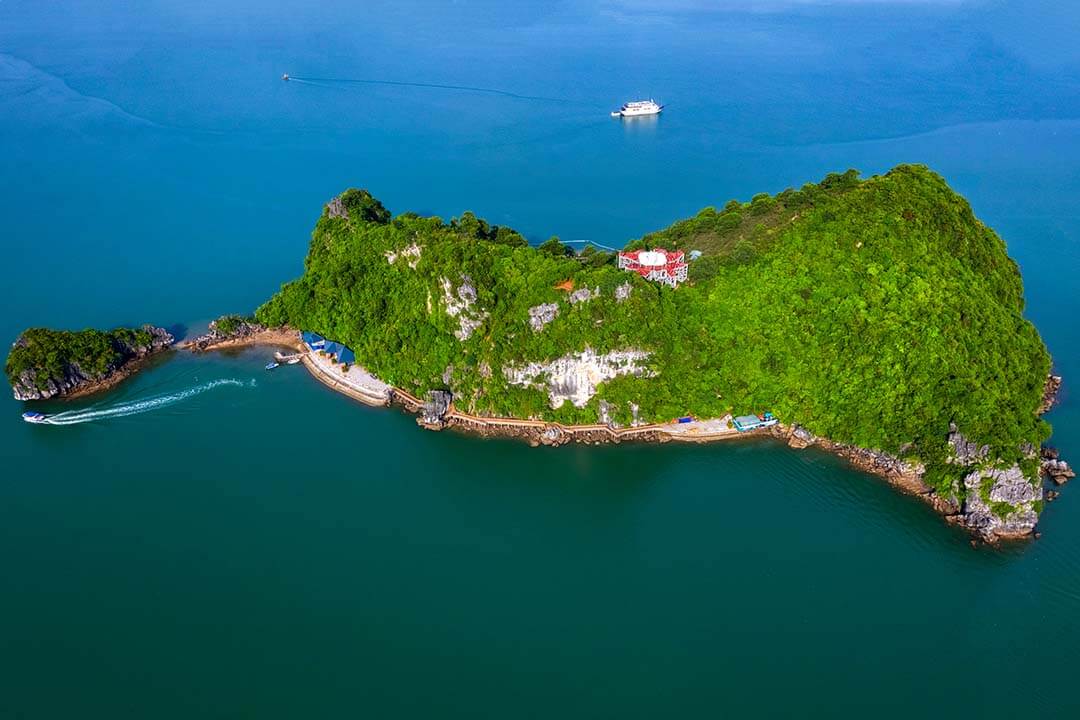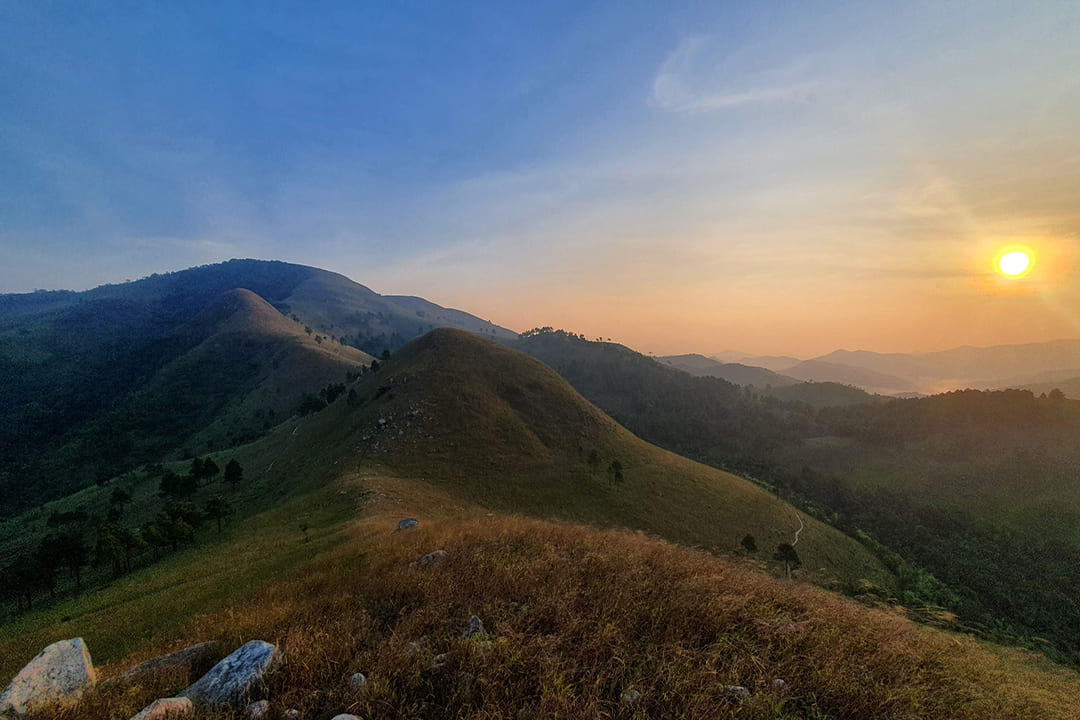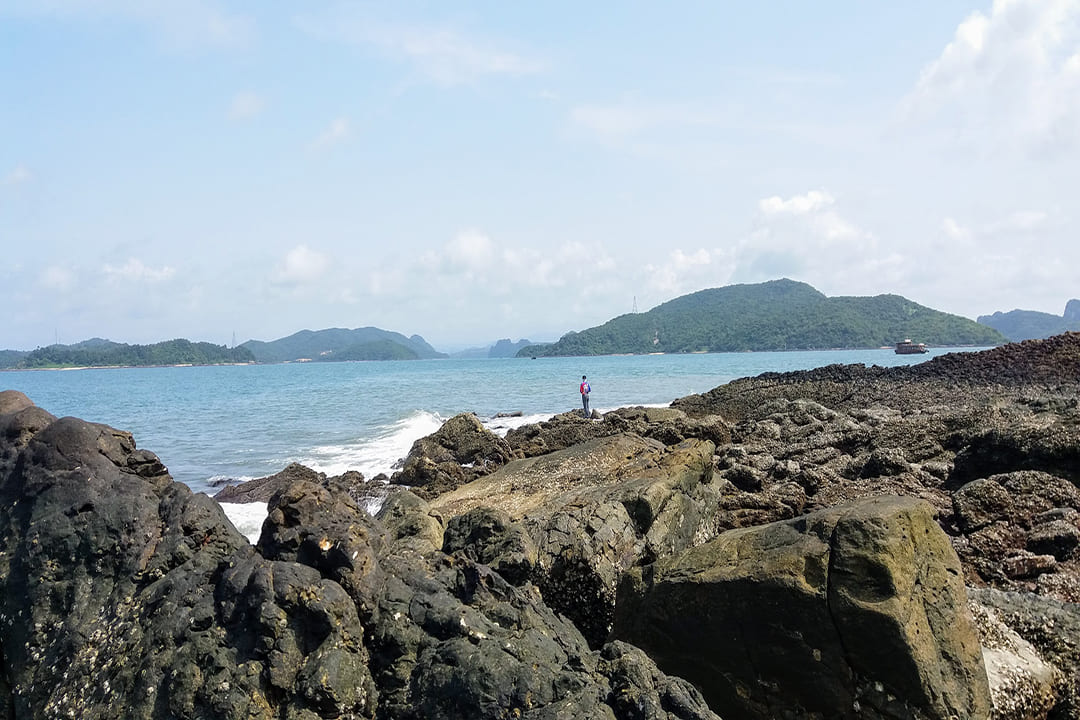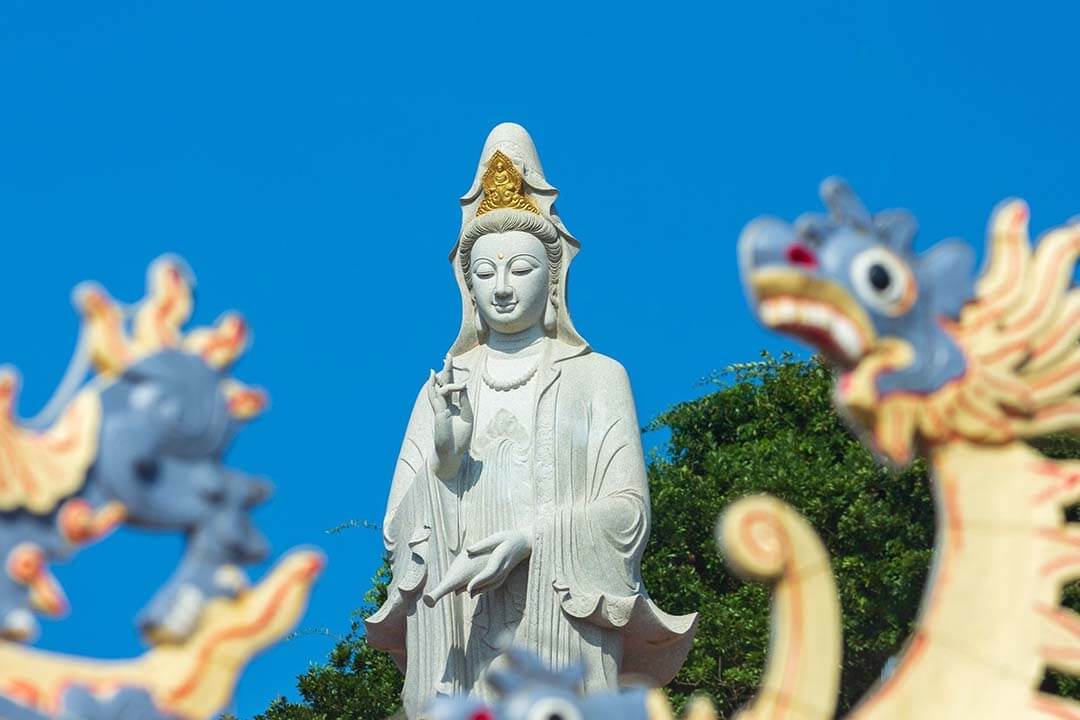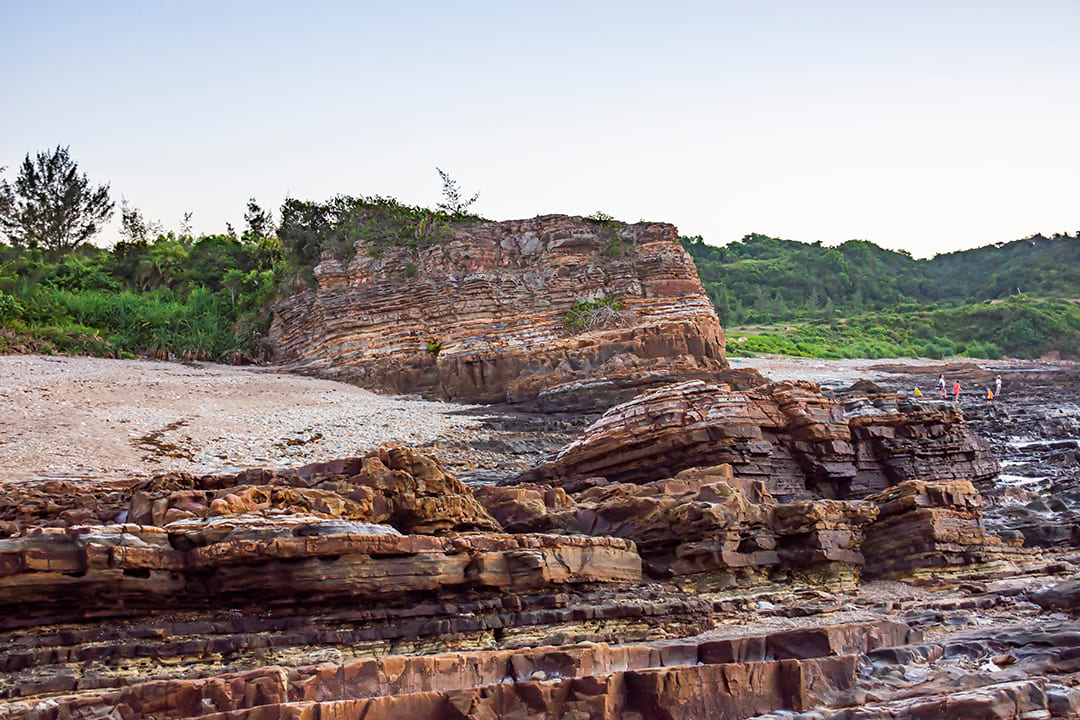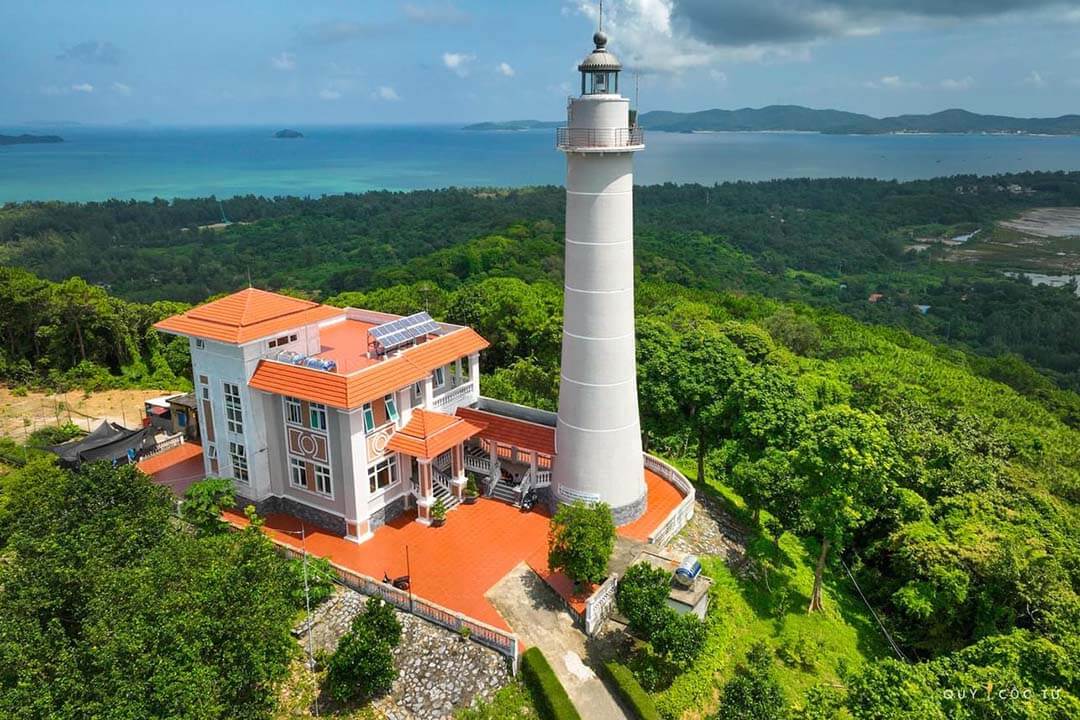Feb - 20 - 2025
Cua Ong Temple is located in Cua Ong Ward, Cam Pha City, Quang Ninh Province. The temple is approximately 45 km northeast of Ha Long City and 210 km east of Hanoi, holding significant historical and religious value.
The temple is perched on a hill overlooking the serene Bai Tu Long Bay. It offers a unique blend of history, spirituality, and natural beauty. The temple is not only a place to honor Vietnam’s heroic past but also an ideal destination for those seeking tranquility, blessings, or picturesque landscapes.
If you are a history enthusiast eager to learn about the heroic Tran Dynasty, the temple is the perfect destination. It also offers an unforgettable experience for pilgrims seeking blessings or nature lovers drawn to its stunning scenery. In this article, GTrip will answer your questions about the temple's history, activities, and the best time to visit.
If you are interested and want to explore Ha Long Bay (Quang Ninh Province), please see our Ha Long Bay tours.
What are the unique about Cua Ong Temple?
The temple is a treasure trove of historical, cultural, and spiritual significance, blending Vietnam’s rich traditions with breathtaking natural landscapes.
History of Cua Ong Temple
The temple chronicles Vietnam’s resilience and cultural pride, deeply rooted in the 13th-century resistance against the Mongol invasions. Initially established as Hoang Tiet Che Temple, it was dedicated to Hoang Can, a local hero who valiantly protected the region from invaders and pirates.
Later, the temple was reconstructed and renamed to honor Tran Quoc Tang, the 3rd son of General Tran Hung Dao, a celebrated military leader known for his strategic brilliance. Tran Hung Dao’s decisive victory over the Mongols at the Bach Dang River in 1288 ended their conquests in Vietnam, cementing the Tran Dynasty’s legacy of strength and unity.
The temple also commemorates other Tran Dynasty heroes, such as Yet Kieu, Da Tuong, Pham Ngu Lao, and Tran Khanh Du,... Celebrating their bravery and contributions to Vietnam’s independence.
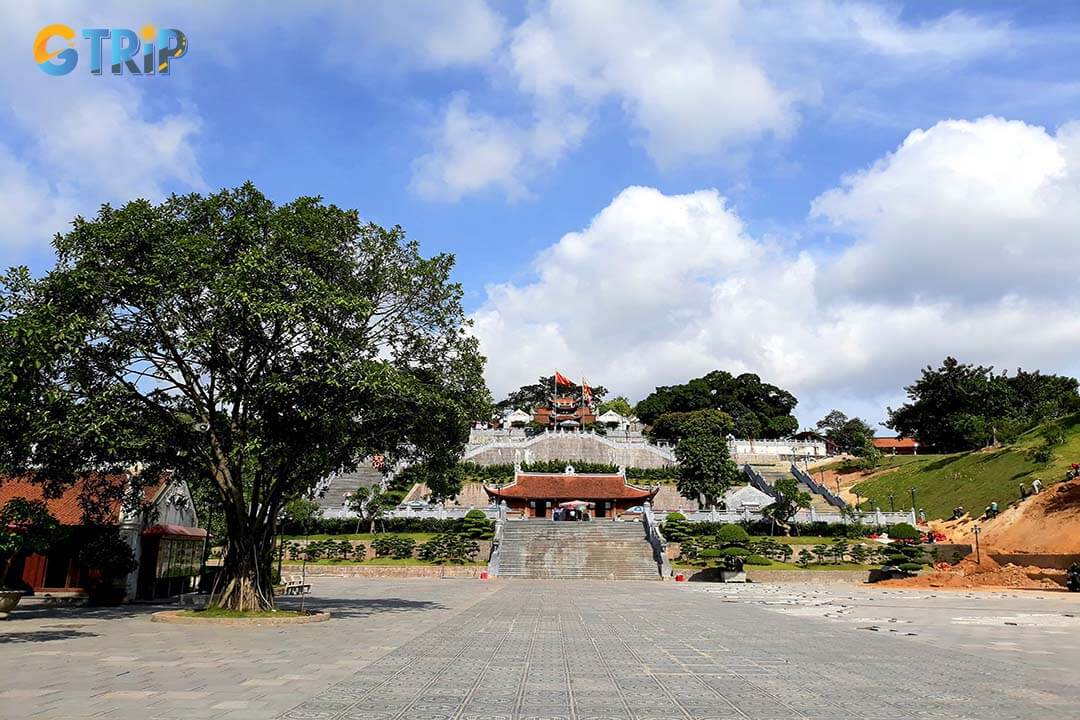
The temple still retains the ancient architecture of the Tran Dynasty
Key milestones in the development of the temple
Each stage in the development of Cua Ong Temple reflects a dedication to preserving its history while meeting the evolving needs of worshippers and visitors. These milestones highlight the temple's enduring role as a cultural, spiritual, and architectural gem of Vietnam.
1907 - 1916: Restoration and expansion
During this period, the temple underwent significant restoration and expansion to preserve its historical and spiritual value. The enhancements aimed to accommodate a growing number of visitors and to restore the original structures that had deteriorated over time.
1916: Construction of the complex
The temple complex took its modern form in 1916 with the construction of three main areas: the Thuong, Trung, and Ha Temple, along with a pagoda. Each structure was carefully designed to serve specific religious and ceremonial purposes, reflecting the architectural and cultural practices of the era.
1946: Restoration of key temples
Amid the turbulence of the mid-20th century, efforts were made to restore and embellish the Lower and Upper Temples. This restoration ensured that these critical structures continued to serve as places of worship and cultural significance, safeguarding them from further damage.
2014: Approval of the master plan for the relic site
Recognizing the historical importance of Cua Ong Temple, a comprehensive master plan was approved in 2014. This plan covered an extensive area of 18.125 hectares, encompassing the temple grounds and surrounding landscapes. The initiative aimed to preserve the temple’s heritage while enhancing infrastructure for tourism and cultural activities.
2016 - 2017: Construction of the Middle Temple
The Middle Temple, an integral part of the complex, was constructed and completed during this time. Designed to honor specific figures and deities, it added depth to the temple’s architectural and spiritual significance, seamlessly integrating into the overall layout.
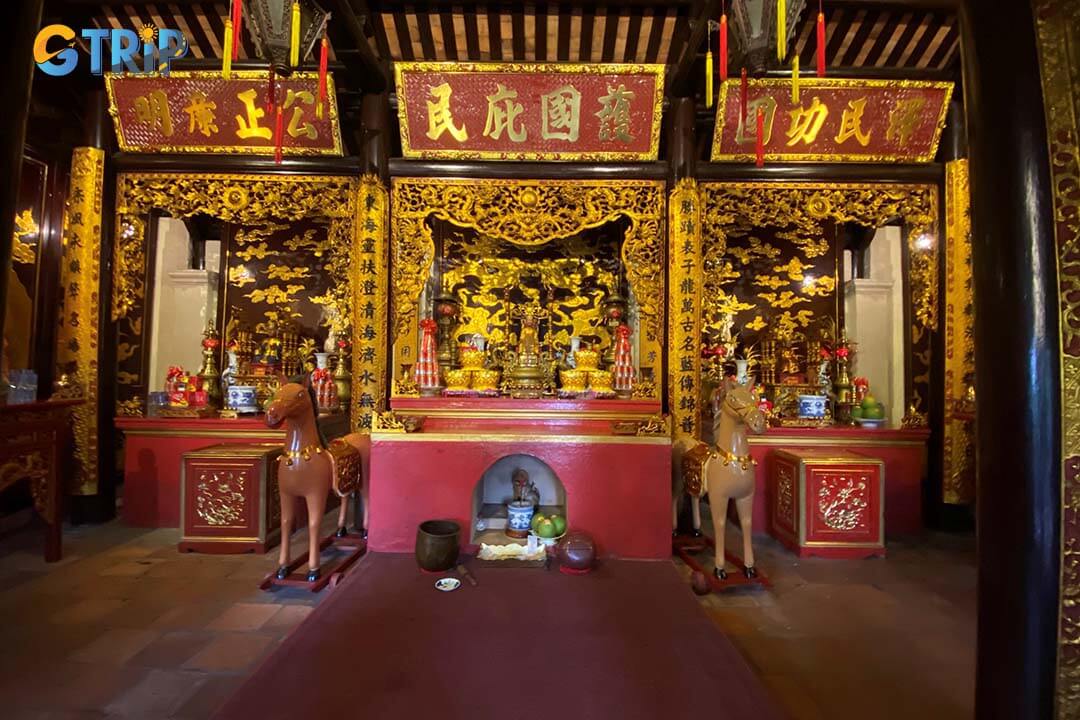
In the worship area at the temple, you should keep quiet when coming
Temple with complex architecture
Cua Ong Temple stands out for its unique and intricate architectural design, divided into three main areas: Ha Temple, Trung Temple, and Thuong Temple. Each area has distinct purposes and honors specific historical and spiritual figures, creating a harmonious blend of tradition, symbolism, and artistry.
1. Ha Temple (Lower Temple)
- Mau Temple: Dedicated to the Mother Goddess, a central figure in Vietnamese folk religion, representing protection, fertility, and nurturing energy. This temple embodies the profound reverence for maternal figures in Vietnamese spirituality.
- Trung Thien Long Mau Temple: Honoring the Mountain Goddess or Mother Goddess, this temple symbolizes the connection to nature and the land, reflecting agricultural and spiritual reverence. Its presence emphasizes the importance of nature in Vietnamese beliefs and daily life.
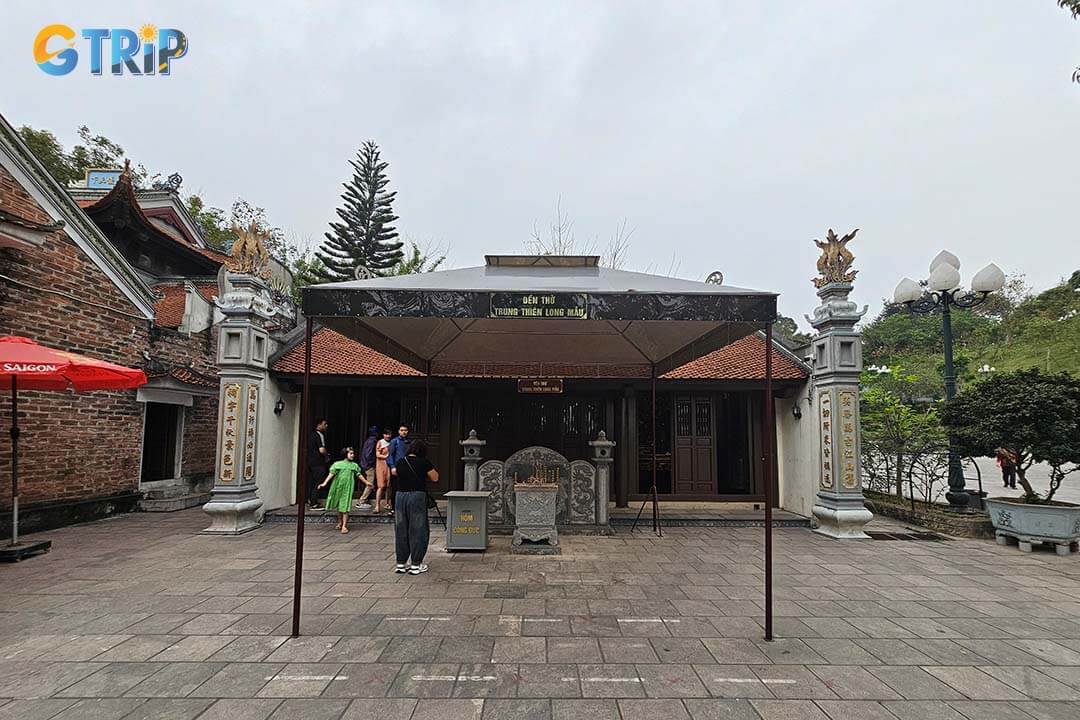
Trung Thien Long Mau Temple on Ha Temple
2. Trung Temple (Middle Temple)
- Hoang Can Shrine: Commemorates Hoang Can, an esteemed military leader during the Tran Dynasty, who was recognized for his vital role in defending Vietnam against the Mongol invasions. This shrine is a tribute to the enduring spirit of patriotism and loyalty.
- Mountain God and Water God Temples: These deities symbolize the guardians of natural elements and are closely associated with agriculture, weather control, and the protection of local communities. Their worship reflects the harmonious relationship between humans and nature in Vietnamese culture.
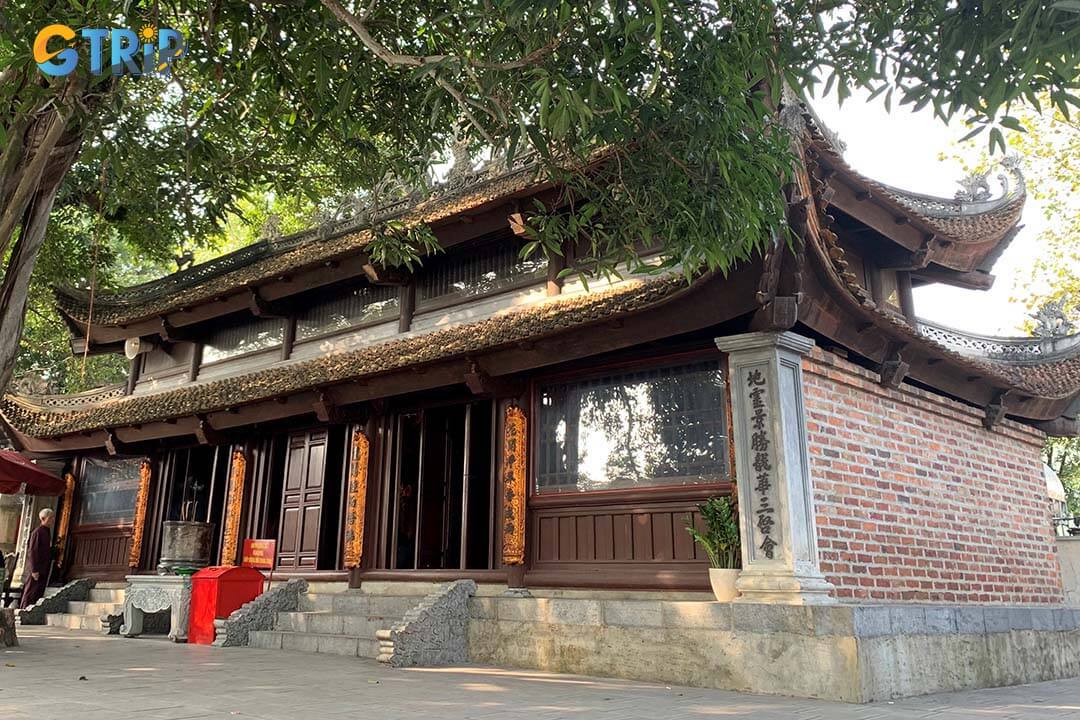
Trung Temple in Cua Ong Temple
3. Thuong Temple (Upper Temple)
- Thuong Temple: Dedicated to Tran Quoc Tang, this temple is the highest point in the complex, symbolizing a divine connection and offering panoramic views. Its elevated position highlights its spiritual importance within the complex.
- Quan Chanh Temple: Honors the Quan Chanh spirit, a guardian deity protecting the local area. This temple is a testament to the Vietnamese belief in divine protection for their communities.
- Quan Chau Temple: Dedicated to local gods and ancestors, emphasizing community worship and protection. It reflects the enduring tradition of ancestor veneration in Vietnamese society.
- Pagoda: A sacred space for Buddhist meditation and prayer, often featuring statues of various Buddhist figures. The pagoda serves as a serene retreat for spiritual seekers.
- Tran Quoc Tang’s Tomb: The tomb is located near Thuong Temple, a significant site that commemorates Tran Quoc Tang, a revered figure in Vietnamese history. The tomb further enhances the temple’s role as a monument to historical and spiritual figures.
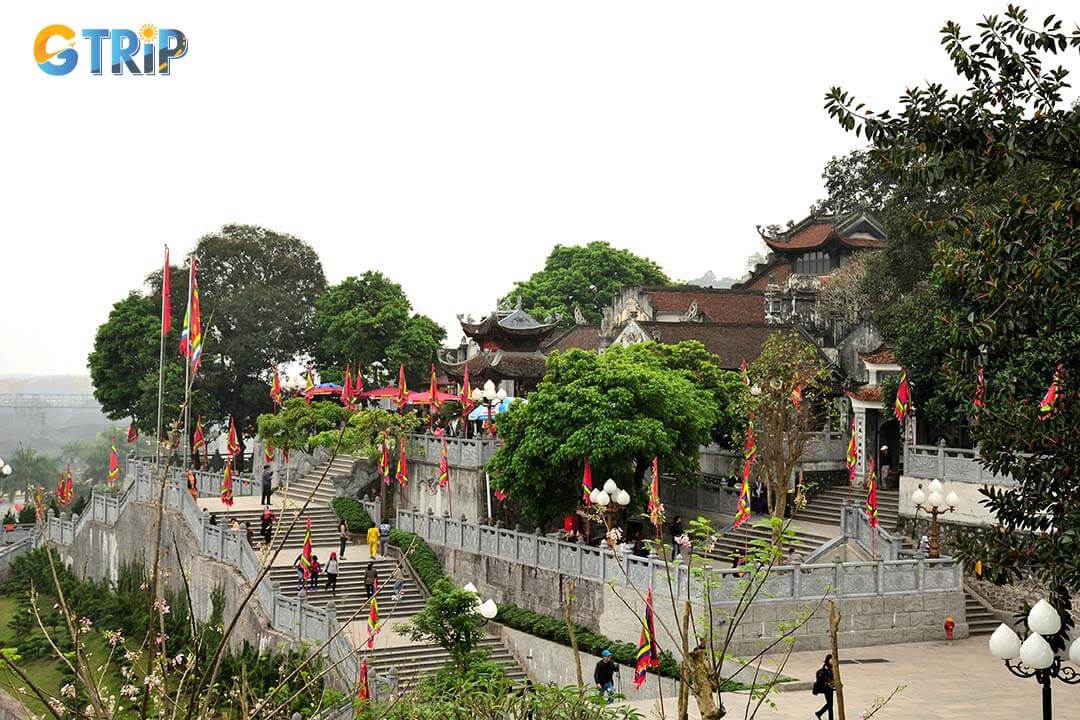
The path to the Thuong Temple has many steps, so you should always pay attention
Statues at Cua Ong Temple
The temple is renowned for its impressive system of 34 meticulously crafted statues. These statues honor legendary figures associated with the Tran Dynasty and their significant roles in Vietnam's history. Each statue is a work of art, reflecting the reverence for national heroes and historical figures.
- Tran Quoc Tang: The central figure celebrated for his outstanding leadership in defeating the Mongol invasions. His statue symbolizes the strength and strategic brilliance of the Vietnamese people.
- Thanh Mau (Holy Mother): Tran Hung Dao's wife, revered alongside him, representing respect for women in Vietnamese society and religion.
- The 2 princesses: Daughters of Tran Hung Dao, symbolized the legacy and continuity of the dynasty.
- Other national heroes: Included generals and advisors such as Tran Anh Tong, Tran Khanh Du, Yet Kieu, Da Tuong, Pham Ngu Lao, Le Phu Tran, and Do Khac Chung. These figures contributed significantly to defending the country and preserving national independence.
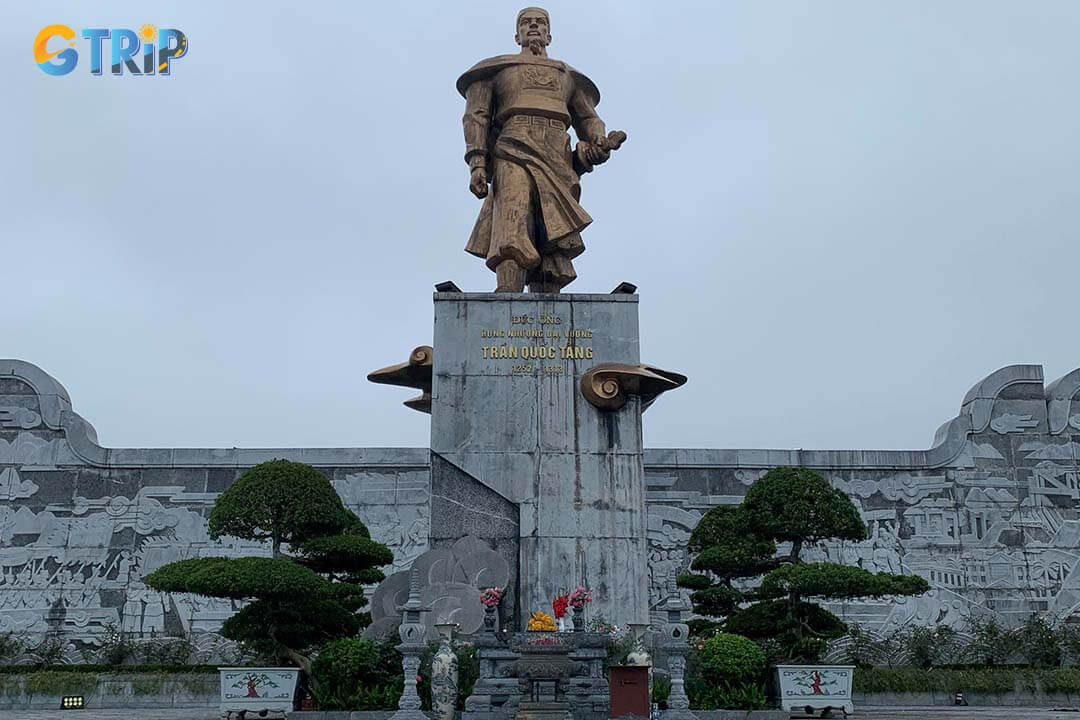
The statue of Hung Nhuong vuong Tran Quoc Tang is one of the highlights at the temple
Cua Ong Temple Festival
The festival of the temple is a vibrant and spiritually significant event that celebrates the historic victories of the Tran Dynasty against the Mongol invasions in the 13th century. Taking place from the first lunar month (usually January or February) to the end of March in the lunar calendar. The festival coincides with the traditional Tet (Lunar New Year) celebrations. It is a time for locals and pilgrims alike to gather and honor Vietnam's heritage.
The festival features solemn ceremonies and lively activities that honor the Tran Dynasty's legacy. The grand opening ceremony includes traditional offerings and prayers to pay tribute to Tran Quoc Tang and other national heroes. Majestic processions carrying sacred objects and worship sessions allow devotees to seek blessings for peace and prosperity, creating a deeply spiritual atmosphere.
Cultural performances, including traditional music, dances, and historical reenactments, celebrate the Tran Dynasty’s heroism. Visitors also enjoy folk games like tug-of-war and cockfighting alongside cultural exhibitions showcasing relics and crafts. The festival combines spirituality, history, and the serene beauty of Bai Tu Long Bay, offering a memorable experience for all.
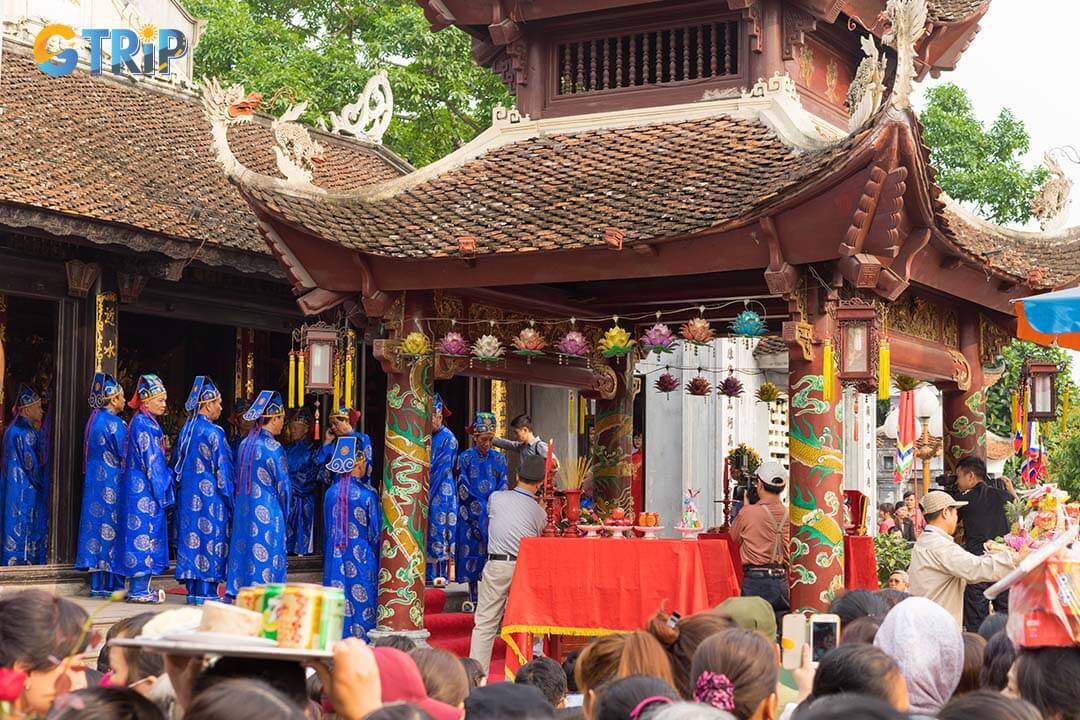
Cua Ong Festival attracts many visitors participating
When is the best time to visit Cua Ong Temple?
The best time to visit this temple is during early spring, from the beginning of January to the end of the third lunar month. During this period, the weather is cool and pleasant, with plenty of sunshine and minimal rain, making it an ideal time for sightseeing and exploring the temple. This season offers a comfortable climate for both worship and tourism activities.
Additionally, the temple is busy during the festival season, which takes place in August and is on the full moon or the first days of each lunar month. This is a vibrant time with cultural and spiritual events. However, if you're looking for a more peaceful and quiet experience, it's recommended to visit on weekdays, as the temple will be less crowded, allowing for a more serene atmosphere to enjoy the surroundings and take photos.
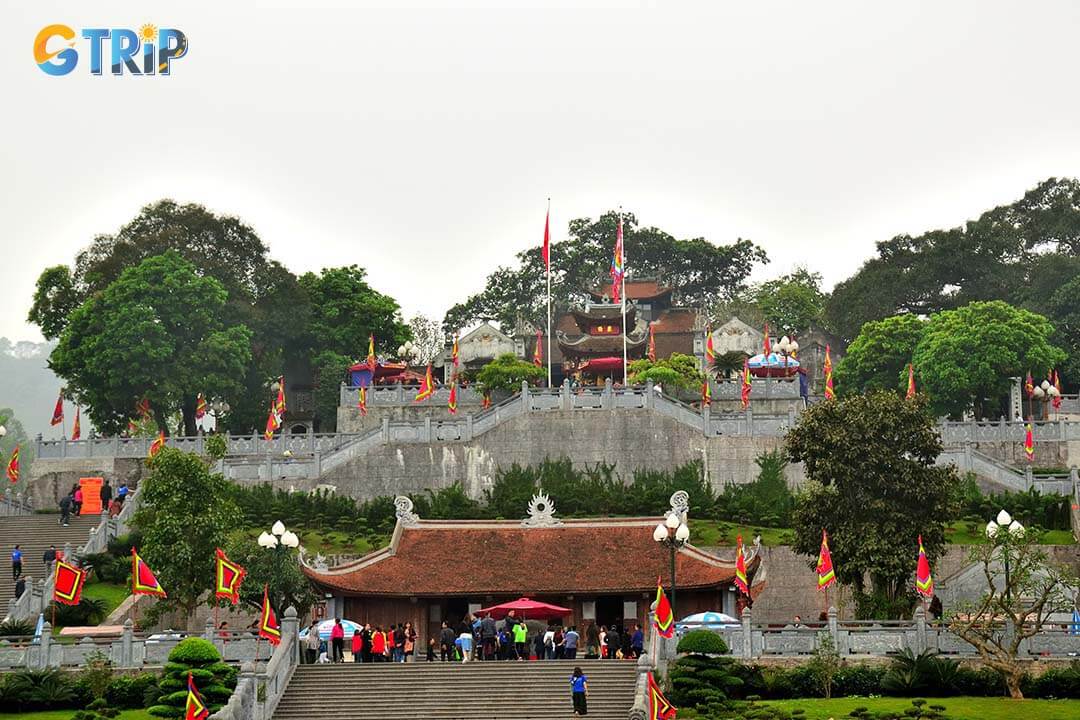
Many people come to the temple during the festival season
How do you get to Cua Ong Temple?
Because the temple is located in Quang Ninh Province, you can easily reach it using many transportation options depending on your starting point and preferences.
From Ha Long City ( Approximately 45 km)
Cua Ong Temple is conveniently located about 20 - 30 minutes from Ha Long City, with several transportation options available.
- By taxi: A comfortable and straightforward choice, taxis cost around 150,000 to 200,000 VND (6 - 8 USD). This is a hassle-free option for travelers who prefer direct access.
- By motorbike: Renting a motorbike is ideal if you’re looking for a budget-friendly and flexible option. Rental prices range from 100,000 to 200,000 VND daily (3 - 8 USD). For a smooth journey, you can use Google Maps to navigate easily and enjoy scenic views along the way. This option is best for those confident in their riding skills and familiar with local traffic.
The route from Ha Long City to the temple is straightforward and well-maintained, making the trip enjoyable regardless of your chosen transportation method.
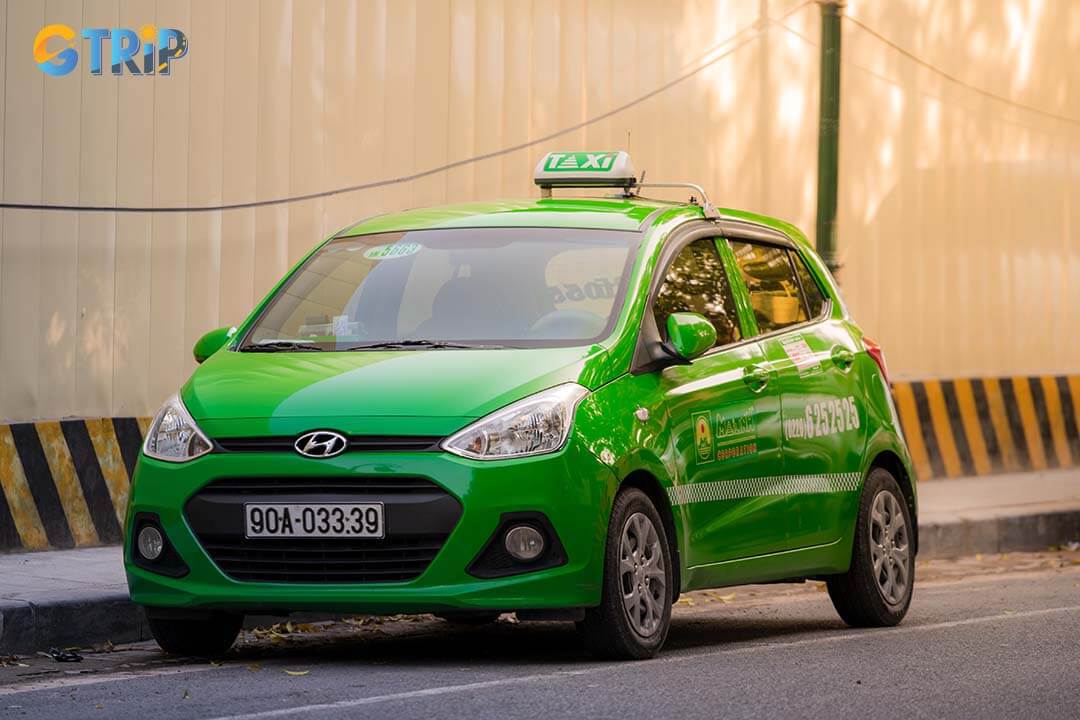
Taxi travels from Ha Long City to the temple
From Hanoi (Approximately 210 km)
There are several travel options available for reaching Cua Ong Temple from Hanoi, depending on your preferences for comfort, speed, and cost:
By shuttle bus:
Shuttle buses are convenient and affordable for traveling from Hanoi to Ha Long and the temple. The journey typically takes 3 to 3.5 hours, depending on traffic conditions. Popular shuttle bus companies include Ha Long Express, Limousine Bus, and Futa Bus (Phuong Trang).
Tickets for these services usually cost between 240,000 to 300,000 VND (10 - 13 USD) for a one-way trip. These buses offer a comfortable and air-conditioned ride, and they typically depart from major bus stations in Hanoi, such as My Dinh or Giap Bat, making it easy for passengers to access from central areas in the city.
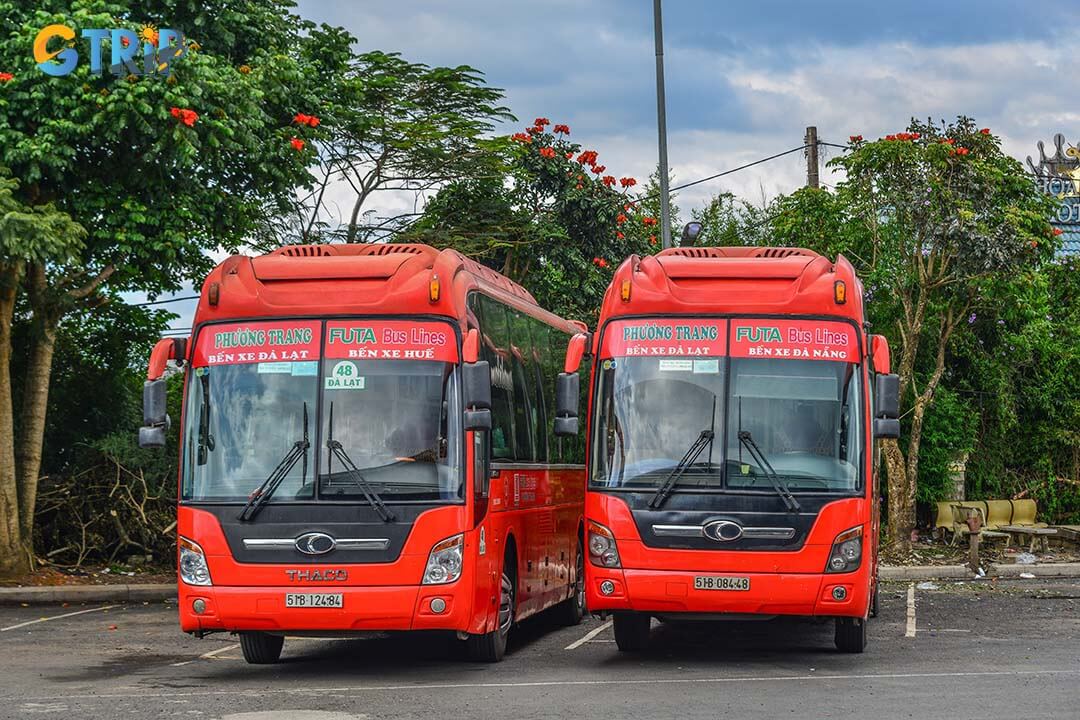
Travelling to Cua Ong Temple by Phuong Trang (Futa Bus)
By motorbike:
For those seeking adventure, renting a motorbike offers the flexibility of traveling at your own pace. Depending on the motorbike model, rental prices typically range from 6 to 50 USD per day. The journey usually takes 3 to 4 hours via Route 1 (Hanoi - Bac Ninh - Ha Long).
Popular motorbike rental shops in Hanoi include Hanoi Motorbike Rental, Moto Adventures Hanoi, and Himoto. Using Google Maps for navigation will help you stay on track and enjoy a smoother trip, especially if you're unfamiliar with the area. This option is ideal for travelers who enjoy exploring at their own pace.

Traveling by motorbike is an interesting experience you can try if you have the opportunity when you come to Quang Ninh
By taxi or private car:
For a more direct and comfortable experience, you can hire a taxi or a private car to take you from Hanoi to Cua Ong Temple. The cost typically ranges from 1,500,000 to 2,000,000 VND (60 - 80 USD). This option is particularly convenient if you're traveling with a group or looking for a more relaxed ride.
Reliable companies offering taxi services include Vinasun Taxi, Mai Linh Taxi, and Grab car (available via the Grab app for private hire). While more expensive than other travel options, it offers the advantage of comfort and direct access to your destination.

If you want to visit many destinations, a private car is the best choice for you
Notes for you when visiting the temple
Here are some important notes and tips for you to Cua Ong Temple to ensure a respectful and enjoyable experience:
- Respect local customs: The temple is a religious site, so it's important to dress modestly. Avoid wearing revealing clothing, and be mindful of local customs, especially during worship. This shows respect for the cultural and spiritual significance of the place.
- Temple etiquette: When inside the temple buildings, keep noise to a minimum and avoid disruptive behavior. If visiting during a festival, such as the annual Cua Ong Temple Festival, expect a vibrant and lively atmosphere. However, always respect the sacred nature of the space, even during busier times.
- Preserve the monuments: Do not touch or damage any objects, relics, or landscapes within the temple complex. These are cultural and historical treasures that need to be preserved for future generations.
- Protect personal belongings: When the temple is crowded, especially during the festival season, take extra care of your personal items. Keep your belongings close to you to avoid theft or loss, as large crowds can make it difficult to keep track of your possessions.

Travel tips and advice for you when visiting Cua Ong Temple
By following these guidelines, you can ensure a respectful and safe visit to the temple. This approach allows you to fully appreciate the spiritual and cultural significance of the site. Additionally, it helps preserve the sanctity and beauty of the temple for future generations. Respecting these practices also fosters a deeper connection to the traditions and history of the temple.

